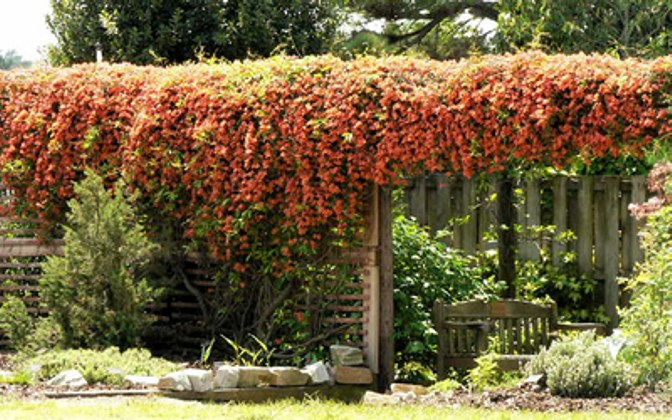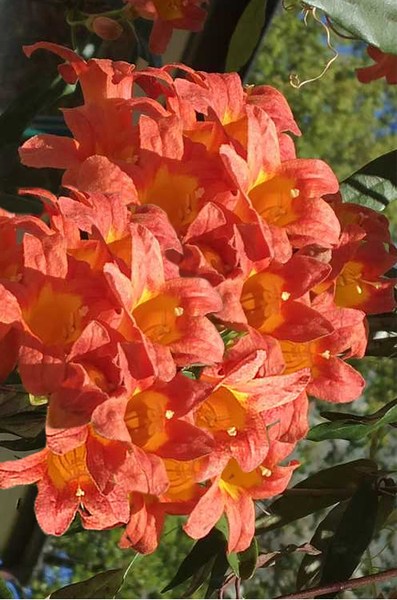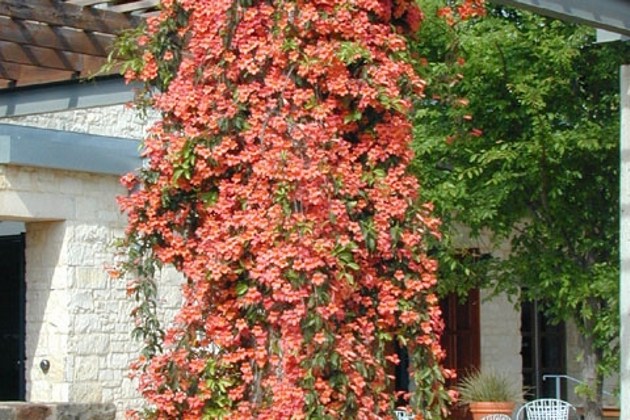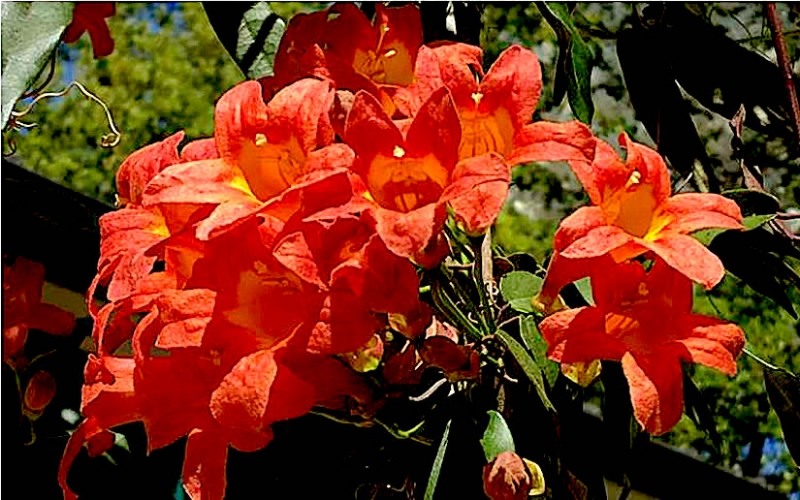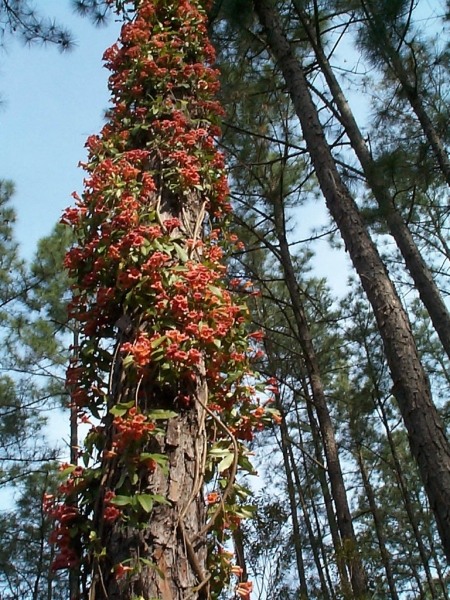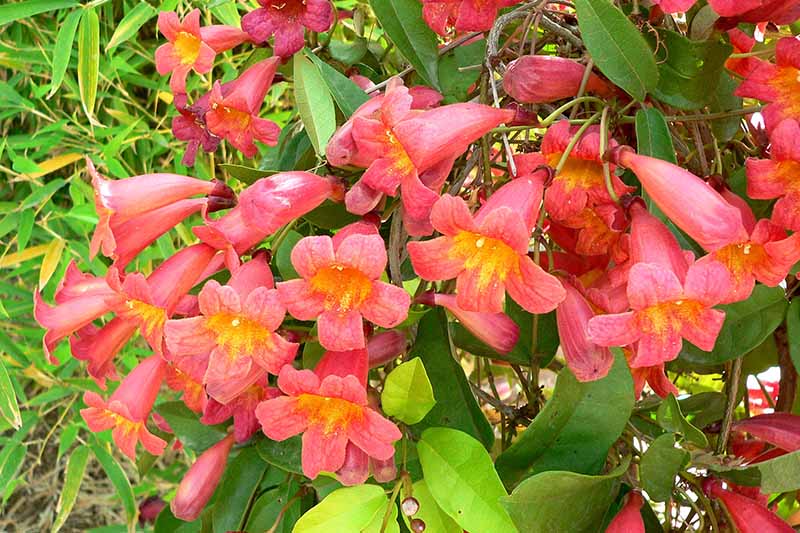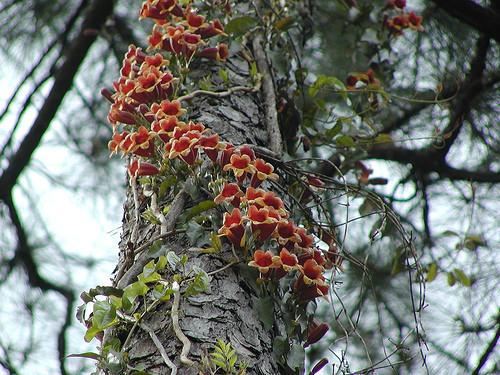Jekyll Orange crossvine
| crossvine |
It is a perennial, fragrant, flowering vine, see how the Jekyll orange crossvine looks like in the garden and landscape.
Jekyll Orange crossvine is suitable for growing in USDA hardiness zones: 6a, 6b, 7a, 7b, 8a, 8b, 9a, 9b. Other winter zone scales for planting this crossvine are ANBG: 1, 2, 3; RHS: H7, H6, H5, H4, H3; PHZ: 7a, 7b, 8a, 8b, 9a.
Crossvine details
| Plant type | vine, flowering, fragrant | ||||||||
| Life cycle | perennial | ||||||||
| Sun needs | part shade, full sun, part sun | ||||||||
| Growth habit | upright, climbing, trailing, twining, creeper, spreading | ||||||||
| Flowering period | spring, late summer, fall | ||||||||
| Height at maturity | 3 m | ||||||||
| Spread | 1 m | ||||||||
| Spacing | 1 m - 2 m apart to cover fences | ||||||||
| Soil type | loamy, sandy, clay, silty | ||||||||
| Soil moist/drainage | moderately drained, poorly drained, well drained | ||||||||
| Soil PH | 6.5 - 8.0 (neutral - moderately alkaline) | ||||||||
| Water needs | average, low when established | ||||||||
| Maintenance / care | low | ||||||||
| Resistance to | deer, drought, heat, humidity | ||||||||
Winter hardiness zones:
| |||||||||
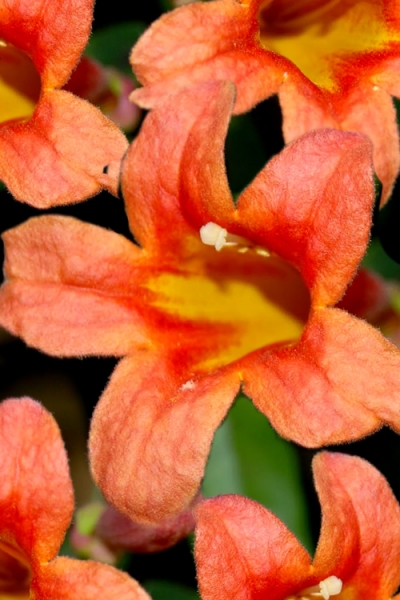 The vine often climbs very high, with leaves only remaining on the uppermost portion of the plant. Crossvine can spread aggressively through stolons and may need to be managed in garden or domestic settings.
The vine often climbs very high, with leaves only remaining on the uppermost portion of the plant. Crossvine can spread aggressively through stolons and may need to be managed in garden or domestic settings.
Cross-vine is a vigorous vine in the Bignoniaceae (trumpet creeper) family, native to the central and southern United States. The vine climbs without twining but does produce tendrils.
It may be found growing native in many soil types, and usually up trees such as pines. In the wild, it is found in swampy forests and woodlands.
Native Americans appreciated the plant for its reputed medicinal value. They used the bark, leaves and roots to treat ailments including diphtheria, rheumatism, edema and headaches. The crossvine gets its name from the cross-shaped pith that can be seen when its squarish stem is cut in two.
Jekyll Orange cross-vine will grow well in shade to full sun, with better flower production the more sunlight it receives. In severe winters, the vine may die to the ground, but the roots are usually hardy enough to survive and will sprout new growth the following spring. Cross-vine may be propagated by root cutting or seed.
Bignonia capreolata Jekyll blooms in late winter to early spring on new wood in clusters of two to five flowers. Its early bloom season provides a nice stopping point for hummingbirds in the area. Some years it re-blooms so quickly that seems it blooms from spring to frost.
The flowers of Jekyll might be a little brighter orange than Tangerine Beauty and they're shaped a little differently as well.
Jekyll Orange crossvine is ideal for use to climb on and cover fences from top to bottom, or to cover a trellis, arch, arbor, pergola or any other structure that might benefit from or support the flowering vine. Rather than grow along just the top of a fence, the vines cascade all the way down to the ground to entirely cover the fence.
Pruning Jekyll Orange vine isn't necessary, however vines can be pruned after flowering to keep tidy.
Jekyll Orange crossvine @ wikipedia.
